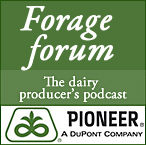As reported in the Reliable Plant, U.S. dairy market sales continue to rise despite economy. According to a recent study, “The Dairy Industry Market Research Study 2009,” while dairy producers continue to struggle with a poor economy and high costs of production, dairy sales have increased by over 2% in 2009.
The new study, which discusses perspectives of 40 dairy processors, associations, and suppliers, aims to analyze the local dairy market dynamics and determine the outlook for the dairy industry in the future. Some of the key findings discussed in the report include:
·U.S. dairy industry anticipates production shift to West Coast, with industry consolidation creating a greater number of mega dairies
·71 percent of dairy processors likely to make capital expenditures for packaging equipment in the next 12 months despite economic downturn; additional 16 percent to make packaging line modifications that might require machinery investments
·Stronger dairy/vendor relationships expected: 90 percent of survey respondents rely upon machinery builder to train operators; 73 percent want suppliers to play more consultative role from concept stage to installation
·Primary and secondary packaging change drivers include considerations about the most economical and environmentally friendly materials, customer requirements and improving efficiency to address lower margins

 The folks in Harrisburg, Pa. sure were lucky last Tuesday, when the state’s dairy farmers built a 90-gallon ice cream sundae on the Capitol Building steps! The sundae was built to celebrate June Dairy Month and is an annual salute to dairy farmers is sponsored by
The folks in Harrisburg, Pa. sure were lucky last Tuesday, when the state’s dairy farmers built a 90-gallon ice cream sundae on the Capitol Building steps! The sundae was built to celebrate June Dairy Month and is an annual salute to dairy farmers is sponsored by 


 Dairy Markets Week in Review
Dairy Markets Week in Review Inoculating
Inoculating  The
The